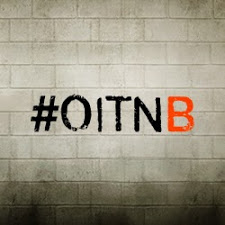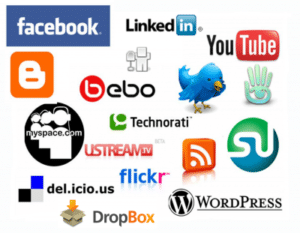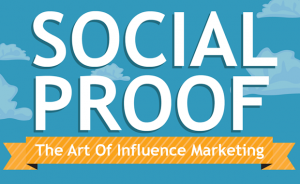
As a business owner, you know that social media is a powerful tool to reach new customers and grow your brand. But what are the best ways to use social media for your business? Here are some tips for social media optimization and social media marketing:
- Use high-quality images and videos. This will help your content stand out in a feed full of text-based updates.
- Use keywords and hashtags strategically. This will help people find your content more easily.
- Share timely and relevant information. This could be news about your products or services, or helpful tips related to your industry.
- Engage with your followers regularly. Respond to comments and questions, and like or share their updates.
- Run promotional campaigns periodically. This could include discounts, contests, or giveaways.
By following these tips, you can maximize the reach and impact of your social media marketing efforts.
Social Media Marketing Tips [ PDF eBook ]
Social Media Optimization
Social media optimization is rapidly on the rise, and there are a great number of people who are currently interested in optimizing their website according to the requirements of social media.
However, not many people truly understand what social media really is and how it can help them, and if you are one of those people, then this article will help you in getting the best of your website.
If you own a blog or are running your own website, then integrating the options of social media in to it is a great idea to invoke the interest of other people. Getting your website recognized is important, and if you wish to achieve your target, optimizing your website according to the requirements of SEO is extremely crucial. In this article, you will learn of a variety of different ways by which you can integrate the features of social media in to your website.
First off, it is important that you learn what social media really means. In the terms of online marketing, integrating social media options in to your website might mean to include a variety of different ways by which people can actually interact with the content that is posted.
For example, if you have written a simple article, providing simple options such as allowing readers to post a comment is a highly user friendly way of attracting the interest of more people and encouraging them to have discussions. There are hundreds of people on the internet who wish to interact with the stuff that is enlisted, and if you provide these options, you can easily expect a sharp rise in the traffic flow that comes to your website.
Apart from this, if you are an active user of YouTube, why not upload some videos? If the content of your videos is engaging enough, you are bound to garner interest from various different sources, which will allow you to spread the word about your website.
The main purpose of social media optimization in a website is to allow the participation of more and more people, so that they can have conversations which will be beneficial for your own website. One of the best and the most influential ways by which you can include social media options in to your website is to hold an online chat session.
Online chat sessions are great, and highly innovative because they allow people to express their views. If you want to get recommendations from your visitors, then holding an online chat session is a great idea. Your visitors will be able to guide you about what changes they would like to see in the website, as well as how you can modify the content.
On the other hand, standard social media optimization can be done by just providing a comments section and a ‘sharing’ option, which allows people to share their views about your website. Secondly, providing sharing options for socially popular websites such as Twitter, Facebook, Tumblr, Digg, Blogger etc. will make it even better for you to spread the word about your page, allowing your visitors to easily share whatever they wish to about your page.
Also, one very important thing that you must keep in mind while optimizing your website is to ensure that you take appropriate care of responding to anyone who writes you a query on time. The main purpose of social media optimization is to promote interest of users on your page, and if you wish to maintain credibility amongst your website visitors, it is very important that you reply on time to their queries and messages.
Constantly keep a check on your Twitter feed, and if you make use of popular social networking sites such as YouTube and Facebook, make sure that you respond to requests and messages appropriately.
Keep blogging regularly
Word on the internet gets out quickly, so it is important that you maintain the right image. Also, keep blogging about your daily activities, as well as the online campaigns that you are undertaking in order to stay connected to your followers, as that will help you greatly in increasing your reputation amongst your followers and visitors of your website, making your ventures much more successful.
Related reading: How social media impacts branding

One of the ways through which you can increase traffic to your blogs and grow the number of your blog readers is through social media marketing. Social media platforms such as Twitter; YouTube and Facebook give you an upper hand as you try to reach your customers regardless of where they are in the real world. The good things are that you can use social media tools to market your business for free by the following ways.
- Publish your blog content on the social media profiles: You can easily publish your blog posts to you twitter of Facebook profiles through tweet feed. You should also set up your blog posts in such a way that they will publish automatically on LinkedIn, Google + whenever they are uploaded without you having to upload them. This can easily be done through your social media profiles settings and any other tools that support this kind of business.
- Include follow me icons on your blogs: You should invite all your readers to follow you on Facebook or in twitter. This should be included at the side bar of your blog. Whenever a reader reads your blog then will then follow you on twitter curious to know what you want them to know. By doing this you will be increasing the number of people who follow your blogs and eventually your blog traffic will start doubling. Through this you will be encouraging people to read your content even when they have not actually visited your blogs.
- Use social media tools and widgets: Most social media sites provide widgets for free and this is something that you should take advantage of. This will help in giving your content more exposure rather than when you do not have widgets. For example Facebook and twitter have widgets which you can add to your website easily without having any problems.
- Add sharing links to your blog posts: You should make it easy for people to share your blog posts in social media tools such as Google +, twitter and LinkedIn by including sharing button. In tweet meme the retweet button and the sociable WordPress plug-in are some of the easiest ways to make your blog posts sharable.
- Repost other peoples content: It is essential that you share content from other sites in your social media account. This is healthy as by sharing other peoples content you are also increasing the visibility of your profile on your network. Eventually this will be posted to your website and you will rip highly. Any person who was overwhelmed by the information that you had shared on your profile will probably visit your wall again so as to find out some more information. Tweeting or posting other peoples content makes you sound natural. It shows that you are not only interested in your own blogs but you are also willing to market other peoples post and be friendly.
- Never force yourself to acquire more followers: Many people think that they will benefit much by applying the ‘scratch my back and I scratch yours rule ‘this means that you should not follow people just so that they can follow you back. This does not work well in social media marketing. You should understand that networks are created naturally because people like your stuff and products. The only way in which you can effectively market yourself online is through trust. You should build a reputable person online though the content of your blogs. People will follow you naturally if they are appealed by your persona and the content of your blogs. All you need to know is that every post that you publish will be viewed by people within your circles as they are interested in your work. Work tirelessly towards improving your blog as the wait is priceless.
- Make your blogs more enticing: Studies have shown that headings which are in question form tend to attract more followers than the titles which are just delivering information. A follow will be more interested with a blog that offers answers to his problems rather than that which just gives additional information. You have to uniquely write your description in such a way that it will attract the reader. If you are not sure about which blog to post then you should tweet a question and let your readers respond by clicking to your link.
- Be active on social media tools such as Facebook, twitter and LinkedIn: Publishing your blogs and then posting them is not enough. You need to be active and take apart in the social media profiles. You should reply messages to other people and also retweet and share their content. Also remember to publish high quality content that will catch the eyes of many readers.
- Join groups on the social media profiles: There are many groups on the social media profiles such as Facebook and LinkedIn. You should search for groups which are related to the types of blogs you post and then join them. Join them and start taking parts in comments and conversations. With time you can link them to your best blogs although you should be careful not to do it excessively. If you overdo it then your friends might think that you are a self promotional spammer and will report or knock you out of their circle.
- If there are other blogs under the same niche write blog posts for them: You should find out whether there are other blog posts under the same niche, if you find some then you should connect with the owner and enquire on whether they can take guest blogs from you. If you get a nod then you can write guest blogs and see how they fair in other different blogs.
- Repurpose content: In this you should think of ways in which you can give use different ways to give your content exposure .this could be though YouTube or photos. Read more about repurposing content
- Read more about how to promote your blog on social media platforms
All these are ways through which you can increase traffic to your blog posts using social media platforms. You need to find out which works for you best and then give it a shot. Many of them have proven to work and give wonderful results.
Social Media Methods You Should Never Apply

Every internet marketer and their mother are actively into social media! In fact, social media is like a fad these days, with every online marketer in the book claiming to be experts in social media marketing. However, the going is not so easy on the social media circuit. That is primarily because the social media users are very wary and intolerant about internet marketers hijacking their personal space. But, if you can manage your social media profiles well, it can be a very handy tool in your internet marketing oeuvre.
Let us now look at some social media methods that you should never apply for your internet marketing promotions.
The first basic mistake that internet marketers do is going all out on Facebook.
There is no denying that Facebook is very popular among online users, with more than 70% of them having Facebook profiles. The key is to understand that Facebook is not everything in the world of social media networking. For professionals, LinkedIn is a bigger deal and for the cool kids on the block, Vine is their poison. So, you have to decide on your social media platform depending upon your target audience.
When you end up having profiles on Twitter, Google Plus, Facebook and all the other variants of social media, you end up diluting your effort to engage users. It is a tough ask anyway to keep people hooked to discussions, threads and conversations. If there are so many profiles to handle, your team will be up against a tough ask to cover such a large territory every single day.
Yes, there are a ton of internet marketers out there who are simply interested in showcasing their products and services. They have scant regard for online users and their preferences. No one wants to be at the receiving end of a marketing blitz that they did not ask for. That is exactly what social media marketers end up doing! Let the engagement bit be about the users and less about your brand, products and services. Generate the interest about your brand first, then suggest links to your web pages. That is the way to do it right!
Social Media Strategy for B2B Sector

It’s taken a while, but the business-to-business community is finally jumping onto the social media mode. Many companies plan to upgrade both their time committed to social networking and the money they invest in it during upcoming year, recognizing the importance of connecting with potential clients on these platforms.
A productive B2B social media marketing strategy is very different than business-to-consumer companies. These businesses want to connect with a much targeted one, instead of trying to reach a mass audience. Here are these steps that every B2B company is trying to implement on Digital Media Platform.
4 Useful tips for B2B Social Media Marketing
1. One Person in Charge
One of the biggest mistakes many B2B companies do that, they never put one person in charge of their social media strategy. Instead, they share the tasks around so that everyone takes part actively. It’s always best to have a stable and consistent voice, however they can keep others involved but not in charge directly.
2. Find the Right Outlet
Pinterest is a wonderful platform for reaching out to fitness fanatics and people who are obsessed with random quotes and images, but when you’re trying to achieve other businesses, it may not be the ideal channel to concentrate. Instead, you can go for LinkedIn, which has a huge base of business users. Need to explore specialized social media sites that might be focused on your industry also (Specific Facebook group or Target audience through Facebook Ads).
3. Importance of YouTube Account
Set up at least one YouTube account so that you can have a single place to store all your videos, which you can promote across all social media later also. Video is an exceptionally popular tool for B2B companies because it permits you to get into the technical aspects of your business. After posting video on your social media sites, you need to link with YouTube page and you may attract people to watch more videos after they’ve finished the first.
4. More Than One Twitter Feed is not that bad
By making more than one Twitter feed, you’ll keep the different kind of streams relative to a smaller audience and improve the chance that people are really reading what you put out there, because it’s more meaningful to them.
Just because you’re not a direct-to-consumer company doesn’t mean you can’t have a little personality. When it comes to Digital Marketing Strategy, B2B companies should use little loosening up. A reasonable amount of fun and enjoy making connections will increase your business exponentially.
Social Media Lessons to Learn from BuzzFeed

Anyone who spends some time on any leading social media network will come across the name of BuzzFeed. There are numerous friends on your social contact list who share and post content bearing the name of BuzzFeed. Its omnipresence on social networks is so powerful that it is quite a matter of envy how they manage to generate that kind of social media clout.
Trailing the footprints of this social media phenomenon, I found several similarities with their method of working with other social media campaigns, along with many differences. The most obvious of these is how they articulate the regular social media lessons into their work. They don’t do anything different, most of the time! Rather they do the usual tricks in the right way.
For example, we have all known and learnt all along that the content you put out should vary according to the social network you’re promoting it on. But there are a precious few who do that! Most are lazy enough to syndicate their content across the channels in a desperate hit or miss attempt to grab attention. On the other hand, if you follow the footprints of BuzzFeed, you will find some regular patterns.
Social Media Lessons learnt from Buzzfeed
Here are some lessons to learn from how BuzzFeed handles the different social media channels:
For Facebook, they create videos that are embedded in square boxes. This ensures that these videos are easy to view, no matter what kind of device you’re viewing it on. There are no aspect ratio issues to write home about. Additionally, these videos almost never have any sound on them. You don’t need headphones to watch them. Without the sound as well, these videos can be viewed and understood.
For Twitter, BuzzFeed comes up with content having listed title-names. Like, Top 10 Ways to Do Something, or, 5 Things to do Today. These titles clearly tell the viewer that it won’t take much time to go through the content. Because they are written in bullet points, the takeaway is so much more for a casual reader. These are ideal headlines for content posted on Twitter.
Instagram posts with little link-back to BuzzFeed pages are a master-stroke of an idea. These appear like the pages of Reddit. The content is viewer-friendly. As there are no link-backs to BuzzFeed pages, it doesn’t appear to be link-plugs for the unsuspecting viewer. It adds a lot of credibility, and click-ability, to the post. There is the BuzzFeed brand name on the posts anyway. With shares going up higher, more people see content having the byline of BuzzFeed. That is more than enough and certainly better than link-backs but little click-through rate.
For SnapChat, BuzzFeed encourages users to document their own stories in their own way. This creates user-generated content with a very high acceptability among other users. You may have someone documenting the experience of watching an El Classico match while another trying out Japanese food for the first time! All of them come exclusively through BuzzFeed channels.
The cardinal difference in how BuzzFeed approach social media as opposed to the others is that they are more interested in using them for branding. They are seldom trying to use the networks as conversion channels where they want to direct users to their home or services page. It is rarely about BuzzFeed. It is about the network they are working on. As a result, they are better suited to utilize the network in promoting their brand name.
There is another difference in approach that you should notice. BuzzFeed is not devising social media strategies to suit their content. They are working it backwards. They are creating content suited for social media. They realize that the social network is quite variable and sometimes, volatile. You cannot tame or control how thousands of users behave socially. What you can do is attune your content to suit their behaviour and traits. It is quite a significant and smart departure from the conventional social media thinking.
The crux of these lessons is that you have to use social media for branding rather than for generating traffic to your website. Let your brand name soar. The result will ride piggyback!
Orange is the New Black: Social Media Lessons

In the world of entertainment, Orange is the New Black is a show that has captured attention across the globe. We are not going into the content of the show in this post, though! Here we will discuss how the social media promotions of this show have captured our attention, forcing us to learn some lessons from it. Orange is the New Black has certainly opened up some wide avenues for discussion and needs careful study to check if they can be incorporated in our own social media promotions. Check these out!
First, the hash-tag of the show Orange is the New Black is #OITNB. This official hash-tag enjoys the status of being a branded entity. As a result, it also enjoys the benefit of being used, tweeted and circulated by millions of watchers spread out all over. Everyone who falls in love with Orange is the New Black tweets or updates social media platforms with the hash-tag #OITNB, ensuring its popularity in the process and enabling the social media handlers of this hash-tag to assimilate posts and go through them quickly.
Second, use arresting visuals to tell your story. Orange is the New Black makes use of pictures and visuals to give audiences a feel of what is going on and what is coming up real soon. These visuals vet the appetite of the show’s watchers. They are immediately lapping up these visuals, sharing them, talking about possible meanings, even fanning out storylines of their own – all on social media platforms. They are inviting discussions and starting out threads. In short, they are taking these visuals viral, the nirvana of every social media campaign.
Third, the cast and crew of Orange is the New Black update their own profiles and web pages with news items and gossip material about the show and associated matters. As a result, the web grows wider, and so does the #OITNB brand. You can replicate this success by asking your own employees, even fictional characters, and business associates to talk about your company or brand online, using your official hash-tag.
The more people at your end talk online, the more leverage your brand will get. Employees can tap into network circles that are beyond the reach of your official social media team. It also brings a whole lot of credibility because the tweets and updates are from a real person.
Social Media Myths
Marketers often face unique challenges, when it comes to social media marketing. Some also believe that it isn’t worth their time and effort. But before giving up, make sure you haven’t fall victim to some of the myths about social media. For example, many entrepreneurs wrongly believe that business is too small to be benefited by social media. This is a misconception believing which will cost you your customers, or rather potential customers.
The communities of people who are in social networks have a connection to one another. And popular social media sites have several communities that are relevant to your specific industry. They can be niche-oriented, small or local communities; nevertheless, these communities can help you to reach your targeted customers. All you need to do is show appreciation and interest in these social groups, especially for some of its members and activities, to win a few loyal customers.
Better yet, the customers that you will acquire through these social media sites are likely to pass the word along their respective communities are further. It will also help you to create a reputation among your customers and targeted audience.
Similarly, some think SMM is mere wastage of time, when it comes to generate leads. In reality, it’s just the opposite. You can actually get connected with more number of people within short span of time and communicate with them at once. In fact, social media sites created a fundamental shift in the way people make decisions.
The decisions and words of other people have become a motivational factor here. Thus, through social networking sites you can make your customers motivate and influence the potential customers. However, make sure you have happy customers out there; otherwise, you will have to start thinking about your reputation management strategies.
If you think social media marketing won’t affect your bottom line, you are wrong, once again. As mentioned, social networks can influence a buyer’s decision up to an extent that was unimaginable few years back.
People always consider what others (especially those who have bought the product or service before) are saying coupled with their own research, before making a purchase decision. And most of this research and talking is done on social networking sites. They will simply hashtag the name of your product/ brand to receive feedback and opinions from their online connections.
Thus, start engaging your customers and potential customers over social media sites for recommendations, which in turn, will help in generating leads.

How To Make Your Social Media Contests Effective

Social media contests are gaining popularity these days as one of the best ways to obtain followers and “likes”. However, if you are planning to sue such contests to gain new business, think again. Social contests and giveaways are good enough to boost your social presence and social stats. However, there is no guarantee that the participants of your social contests will engage with your page again once the winners are announced, even if they start to follow you.
The good news is that there are exceptions where effective social media contests helped companies to gain new businesses. For this, you need to plan your contests thoroughly, aim your targeted audience correctly, and launch the contents under right circumstances.
Have a proper goal
To begin with, you need to have a proper goal. Just like your other online marketing efforts, social media contents need a clearly defined goal; otherwise, you cannot generate any value to it. Increasing the number of your followers on a particular social networking site cannot be defined as a clearly defined goal, when it comes to social contests. A good marketer should know that increasing the number of followers is just the beginning of your objective, not an end-goal of the contest.
You need to identify the real motive behind the contest.
In most cases, the ultimate goal is revenue generation; however, social contest are also used as a tool for conducting research and surveys. You need to measure your ROI from the social media contest in terms of leads and conversions. And for that, you need to determine what you want to achieve with such social efforts and measure the ROI based on it. Social media contests can also help you to find your niche customers, who are interested in your particular product. Thus, revealing a new market opportunity to you.
Next comes the target.
You need to define your target audience. As mentioned, most of the followers participating in your social contests hardly think beyond the prize. And there is no point catering to such audience, as they will hardly help you to obtain your goals. Thus, align your target audience according to your specific goal and market the social contest to exclusively them. Such targeted effort will also help you to gain faithful clients.
The prize matters, too.
Most marketers believe the social contest prize should be attractive and trendy. Though trendy prize does attract many followers, it will lead to the same issue – your followers will never think beyond the prize. Three types of prizes are being offered at present when it comes to social contests – intangibles, third-party prizes, and products from the company running the contest. And it again needs a smart marketing strategy to produce an effective ROI in the prize offered. It must be planned in such as way that the prize should cost minimum, while providing an enormous success.
Social Media Tip: Public Relations through Employees

Gone are the days when you could safely conclude that any publicity is good publicity! Nowadays, the social media phenomenon has changed the way consumers look at brands. Thanks to the unifying feature of social media platforms that give every user a voice, consumers are not nameless, faceless or divided groups anymore.
They are very much a unified force, singing paeans to your brand or otherwise! So, to maintain effective public relations, you need the support of social media networks. And who better to do that on social media than your own employees!
You have to take into account that your employees have social media profiles too. They spend enough time hanging out on Facebook and tweeting on Twitter. Why not tap into this and glean out something productive out of it? Of course, because you will be engaging the employees in this partially personal endeavor, you need to motivate them into doing so.
They are not going to be working at promoting a positive word about your brand unless you sweeten up the deal with some perks or incentives. But before you do that, you need to set them through a course in what’s acceptable on social media and what’s not when it comes to talking about your company or brand.
This course should include suggestions as to what kind of updates or shares you think should go out in the public domain. You wouldn’t want them talking about your company’s internal policies or goof-ups that the public relation machinery wants to brush under the carpet!
The focus should be on what is the right way to promote your marketing message and work culture without sounding pompous or synthetically motivated. Users of social media networks are easily repelled if you talk about yourself and nothing else. Your employees must have an inclusive approach when they are working at building up public opinion about your brand.
When you hand over a large chunk of the public relation duty to your employees, you need a stringent team to look after what they are doing for your brand. You need to control the slip-ups when they happen, as quickly as you possibly can. At the same time, it makes sense to reward employees who are better at this job than the others. Social media networking will be useful to your brand but if you are not careful about what’s going online, it is going to be doubly as damaging.
What Local Businesses Gain from Social Media

Local businesses have every reason to get excited about the rise of the social media phenomenon. All these months, social media found takers only among larger, more established brands. The reason is that social media users paid attention to brands online only if they have a strong presence offline. Now, that same line of thinking is going to help smaller businesses working only in local pockets.
According to research, 63% of consumers in USA nodded in the affirmative about buying from local businesses if they found these companies on social media networks.
Why is that so? The presence of local businesses in the social media platforms like Twitter, particularly Facebook, established their credentials in a way. Consumers wary of buying something from an unknown brand or company found considerable solace in the fact that the company has a social media page.
There are other consumers as well on the Facebook page in the form of friends and on Twitter as followers. They act as an added assurance for potential consumers! They feel safe that they are buying from an authentic seller.
Another reason why local businesses need social media presence is that these platforms help to tap into the local market. There is no better place to find what local consumers are looking for other than on social media networks.
You can push your products and services on these networking sites by creating business pages. Engage with the local buyers and you will be able to make better use of your online marketing resources. Because you have a social media page with tangible contacts and addresses, you will be able to make a better sales pitch than a business based thousands of miles away.
The presence of companies on social media is now an issue of trust as well. A couple of years back, you were not willing to buy anything from an online company that did not have a website. The same can be said about companies without social media networks.
In the local domain, word of mouth publicity is another integral aspect of getting business. You can create that positive buzz about your brand or company on the local scene only if you have a social media presence. Mobilize your friends and followers and you will have people talking about your business in no time!

Social media sponsorships offer tremendous opportunities to marketers. Such a relationship can help your business endeavors in numerous ways, including the following:
Creating Awareness for Your Cause –
In the average scenario, your sponsors will want you to promote them. However, in a truly mutual relationship, they could easily promote you and create awareness for your cause as well.
Enhancing Your Credibility –
The more well known your sponsors are, the better it is for you. Their notoriety could work wonders for your own credibility.
Funding Your Cause –
In some cases, you may not have the funds needed to get your new campaign or concept off the ground. But if you have a good sponsor backing you up, there is a great chance that they will foot the bill for the exposure they receive.
Opening Flourishing New Revenue Streams –
Do you have a strong network of customers, prospects, and partners? If so, then a sponsor may be willing to pay you and contribute to your revenue just to be a part of it.
Finding the Right Sponsorships
Whether it is helping out with an event you are hosting or attracting new evangelists to help spread the word about your brand, this type of relationship can provide the fuel you need to enjoy a nice competitive advantage. Following are some tips on how you can secure social media sponsorship that enable you to get ahead:
Do the research.
When looking for social media sponsorship, the best thing you can do is identify brands with needs similar to your own, and track down their sponsors. A good place to start would be your favorite social network as sites like Facebook and Twitter make it pretty easy to find account holders, brand pages, and other key information. Even if a sponsor is already helping out one of your competitors, they may be willing to help you as well.
Show them you’re worth the risk.
Seeing that they are often making an investment, it is safe to say that sponsors take a gamble when partnering up with any marketer. For this reason, you will likely need to make a concerted effort to show them why you’re worth it. So if it is an event you are trying to get funded, illustrating the success of a past event and how they will benefit from coming on board for the next one could be the key to piquing their interest.
Clearly explain your needs.
You will blow your chance for a potentially prosperous social media sponsorship if your needs are either unclear or complex. From sign-up form to the funding process, every task must be as clear and simple to complete as possible. All it takes is one poorly designed or unnecessary step to blow the opportunity of a lifetime.
Social media sponsorship present marketers with an opportunity to thrive in the social realm and beyond. If your business can use a helping hand, this is something you need to take under consideration right now.
How Social Media Is More than Just For Kids

Businesses have this myth that social media networks make a bad marketing platform because they are usually populated by children, the oldest being teenagers who are in high school. Those who perpetuate this myth can’t be any more wrong, as the statistics tell a different story. This article will mention the statistics of four of the biggest social networks. Knowledge of age groups in these networks is important as it helps you formulate your marketing strategy. Note that the following statistics will change in the future.
First, we have Facebook. Knowing this site’s achievements alone, which consist of being worth around $7 billion, is evidence enough that social media is not just for children. As of April 2012, Facebook has over 900 million active users, possibly having reached 1 billion at this point.
Furthermore, surveys have shown that around 52% of Facebook’s users fall into the age group of 18-25, with only 20% between the age group of 26-34. Not to mention that 33% of the users fall into the age group of 25-65, leaving the age group of 13-17% with a mere 15%. Not a lot of children in Facebook, as you can see.
Twitter is a social networking site that is second only to Facebook, known for its absolutely simple and quick usage for communication. According to statistics, those in the age group of 25-44 make up 25% of Twitter’s user base, with the 45-54 age groups making up 20%; only 20% of Twitter’s users are younger than 24 years old.
Given that LinkedIn is a social networking site for professionals, it is quite obvious that this site is not for children. To hammer the point home, the average age of LinkedIn’s users is 44, making it one of the social networks with the oldest user base population. LinkedIn’s users in the age group of 35-44 make up 30% of the user base, 20% of the user base is between 45-54 years old, and users that are 54-55 years old make up 15% of it.
Average ages of users
Now that you have seen the statistics of today’s 4 most popular social network sites, it is already evident that social media isn’t just for kids at all. For more evidence, here is a list of social networks since year 2000 with the average user ages in each network:
- MySpace: 31
- Xanga: 32
- Hi5: 33
- Friendster: 33
- Tagged: 34
- Last.fm: 35
- LiveJournal: 35
- Reddit: 37
- Ning: 37
- StumbleUpon: 38
- Digg: 38
- Facebook: 38
- FriendFeed: 38
- Twitter: 39
- Slashdot: 40
- Delicious: 41
- Classmates.com: 44
- LinkedIn: 44
Looking at the statistics alone, it is clear that the myth of social networks being mostly populated by children is just that: a myth.
How Social Networking Sites Help In Marketing Your Business

Social networking sites are becoming easy and quick way to market the business. If you are beginner or you are struggling to get the exposure on the web then learn to use social networking sites that will aid you to the best advantage.
What Do You Understand By Social Networking?
Social networking is a tool to connect with other professionally as well as at personal levels. To be active on the social networking websites means keeping up live/ in touch with friends, family and other professionals at convenience. These days, these social networking websites are utilized for promoting-marketing the business/brands online.
Marketing Your Business
You can definitely choose the stick with the social networking websites that are broader in scope and can market/promote your business in efficient way. With social networking websites, you can make direct contact with your customers/clients. Also, with this you will be able to target your audience directly, know their likes and dislikes which will make easier for you to serve what they prefer.
So, how these social networking sites will help you to boost your business? Here are some tips:
Find the Niche Networks within the Industry
With so many social networking sites popping up, some of them are particularly targeted in specific niche. All you have to do is find out that site that works perfectly within your niche and utilize them. This way, your business will have less competition and can become the leader within small networks.
Pass the Traffic
With social networking sites, it is possible. Your ultimate goal is to pass traffic to the website, so what you have to do is post as many images, content you can on the networking site describing about your business. Also, get the video uploaded on YouTube which will be a plus in boosting the business. People have a tendency of what they see can remember very well, so try to link pictures/photos and such stuff via social networking sites to your website to get potential results.
Provide Something Attractive
Through the social networking website you can offers various special deals/discount code in regards to your business. The thing to think is what are you offering that other aren’t, then only it make sense in attractive people’s attention.
Interact With Your Customers
The social networking sites have the best feature that hasn’t worked with any other marketing strategies is it lets you interact with your consumers directly. This way your audience too feel cared and the more interaction the more they know about your business and with the word of mouth your business starts prospering.
Market Everywhere
Don’t limit marketing of your online business to one or two websites try it to as many social networking sites you know. Post all sorts of information about the business, pictures, associated content and more to get it wider exposure on the web.
To keep your business ahead of all, you have to become a marketer and think like one. You need to get something more than just usual marketing strategies. The online marketing is more than just generating sales, or leads, with the help of social networking sites the things have become relatively easy and perhaps the most cost-effective one with desired results. It is just the matter of concentrating on the few loopholes; working on them will surely get results.
Few Social Media Mistakes that Can Cost You
Social media is the new in thing about marketing. All the marketing experts have understood how important it is to rely on social media for making their product or service visible to a large group of visitors and increasing the products’ shelf life.
There are probably millions of suggestions on social media posting that you come across everyday in different SEO blogs. However, there is no “one tip fits all” suggestion for marketing on social media. You can get umpteen numbers of suggestions. The trickiest part is to apply the right tip that fits your product. We have focused on a few very crucial of them.
A Twitter Mistake to do away with:
People often make the mistake of starting a tweet with a username syntax. Many of the marketers also have taken the plunge without thinking twice. Nonetheless, this practice becomes a major hindrance in exposing your product to the largest group of visitors. Using a username in the beginning allows only the person who tweeted, the person mentioned in the tweet and their followers to see it. On addition, you should keep following people, favouriting and retweeting for building and maintaining a relationship with the target users.
Hook on YouTube:
If you depend a lot on YouTube for the marketing of your product, there can be several ways to hook the visitors to the intended video. One of such methods is a tiny pop-up box that carries a message insisting the visitors on subscribing.
Local Businesses, Give Complete Address:
If your business wants to make a mark on the Facebook, enlisting to the local business category is necessary. This works well for most of the local businesses. Moreover, do not forget to mention your complete address in the business page’s settings that any visitor can contact you whenever he feels like and the process can be done with minimum effort.
So, now probably you understand that no matter how smart your social media skills are, there is room for mistakes if not all the steps taken carefully. Marketers often spoil their million dollar marketing ventures by making tiny (sometimes big) mistakes while promoting the product to the social media users. Try to stay away from them by being a little careful.
Social Proofs: Why Have them and How

To state it in a matter of fact manner, social proofs are a label that testify how many shares and likes your post or web page has got on social media networks. Social proofs are simply buttons with the social media logo and the number of shares or likes that online readers have hit on that particular post. In other words, if a post has 100 shares, it means it has been shared a hundred times on Facebook or Twitter, as the case is.
Now the question begging to be asked is why bother mentioning how many people have read that post. The answer lies in the simple advertising philosophy: a large number of people bring in more people!
To explain it, consider a restaurant that you find crowded every time you walk down that part of the town. You will conclude, more often than not, that the food served at the restaurant is of good quality, otherwise so many people would not have queued up. The next time you eat out, you will prefer this particular restaurant!
In the same way, when online readers find that a particular web page or blog post has been shared on social media platforms extensively, they are more inclined to read the entire page with greater focus and attention. It also attunes them to appreciate the page as opposed to reading it with an open mind. After all, when so many people have liked that page, it must be something good! Who knows, the reader might hit a share or like after reading it, just to be part of a group of like-minded individuals!
Make use of this consumer psychology: get the social proof indicator right on the top of the page. That is where it is most effective. You must keep in minds that if the number of shares or like is below 100, do not bother with the social proof tag: the inverse is true as well!
If people find a post with low shares, they automatically conclude that the content on it is not worth their time. To add to the social proof factor, you can get real people to talk about your brand in the form of text or videos. this will make your page more credible and believable to online users.
Related reading: How to work on online reputation management?








I found great article about social media optimization. Thanks for sharing such a good thoughts here. Really nice. Like it.
Thank you
I am always learning something from your blog ,thanks for sharing important information & tips with us.
Thank you
Great posting ! Thanks for this sharing this detailed blog on social media optimization ! Thank you !
Thank you
hi,
Excellent article is here! very useful information you provide in article.Thanks for sharing such a good thoughts here. Really nice. Like it.
Thank you
I found great article about social media optimization. Thanks for sharing such a good thoughts here. Really nice. Like it.
Thank you
This is one of the best and amazing blog on Social Media Optimization. The flow of the subject goes really well and it arouses interest. Lot of knowledge can be gained by this. The importance of Social Media is huge and following the suggestion provided by author will surely yield results. Thank you for sharing this wonderful and informative article.
Thank you Vedavyasa
good content about SMM
In this blog article you have clearly explained about the social media links and buttons etc; Useful tips on social media marketing.
socialprachar.com/digital-marketing-training-in-bengaluru/
Thank you Prashanthi
Very good information sir
thanks for writing this information
I found a great article about social media optimization. Thanks for sharing such good thoughts here. Really nice. Like it. it’s really helpful.
Thanks for sharing the wonderful tips on social media optimization. keep posting in the future also.
Thank you for the providing kind of information
nice article
Regards, socialprachar.com
Social media is not for “marketing,” it’s for developing relationships.
popular social media like Facebook, Instagram are providing many marketing tools to grow our businesses online. Every click on their website helps the business to reach out to their customer preferences.
The best part of this content is “How to promote your blog through social media”.
It’s become very useful when SEO is combined With Social media marketing to grow a business.
Really informative content I have ever read.
Absolutely. It’s all about relationship build up, Personalization and Binge tactics. Thank you for your comment.
Hey, Hi Thank you for sharing this post. Your post is very useful to digital marketing experts and beginners.
Thank you for sharing this informative post.
This content is really long but one thing..reading this is not a waste of time. I will implement all these for my business too.
:) Yes it’s long but tried to keep it detailed. Thank you.
That’s a valuable information.
Thanks for posting an excellent article. Your site has provided the best information and is useful to all people.
Nice blog. It will be really helpful for me.
Great and useful blog really helpful.
Thank you for sharing the social media tips.
I just read your insightful post on social media optimization! Your tips are spot on and incredibly practical. The emphasis on authentic engagement and strategic content is truly valuable. Thanks for sharing these effective strategies. Can’t wait to implement them and watch my social presence soar!
Good tips.